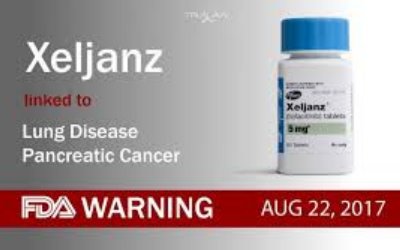The Pros & Cons of a Controversial Arthritis Drug
Xeljanz, generically known as tofacitinib, is an arthritis drug prescribed to rheumatoid arthritis patients who don’t respond well to other drugs like methotrexate. Unlike other arthritis drugs, Xeljanz is a Janus kinase inhibitor that targets a specific cellular function involved in the body’s immune response.
This drug has been the center of controversy since the FDA issued a warning about the potentially fatal side effects in 2019. However, for many patients, Xeljanz has been working well.
According to the drug manufacturer, Pfizer, Xeljanz reduces the acceleration of joint damage and reduces pain and swelling in patients with rheumatoid arthritis (RA). Pfizer reports that some patients begin to experience relief within 2 weeks, while others don’t experience relief for 3 to 6 months.
Xeljanz reviews
Xeljanz has mixed reviews, as expected for any drug.
One user posted on Drugs.com “Everyone who has RA needs to choose between quality of life or quantity of life.” And “[Xeljanz] is controlling my RA well, in conjunction with Methotrexate, folic acid and leucovorin. Previously, I have been on Enbrel and Humira.”
Another user writes, “I am on 11mg Xeljanz for RA and it has only been five days. I had diarrhea several times a day since starting it.” And “My upper body is really hurting since starting this medication. Nothing is helping. I take pain medication, Methotrexate, and prednisone also. The pain isn’t subsiding.”
You can find more Xeljanz reviews from real patients on Drugs.com.
Although many people have reported feeling better after taking Xeljanz, that relief comes at a price.
Common side effects of Xeljanz include:
-
Increased risk for serious infection. Since Xeljanz inhibits the body’s immune response, people taking the drug are at high risk for serious infections. Some of the infections reported include tuberculosis (TB), shingles and infections caused by viruses, bacteria, and fungi. Deaths from these types of infections contracted by Xeljanz patients have been reported.
Anyone considering taking Xeljanz should get tested for TB before starting their protocol and continue being tested periodically. People with existing infections should not take Xeljanz to avoid increasing the risk of complications that can become fatal.
Those on a high dose (10mg twice daily and 22mg once daily) are at higher risk for infection than those on a low dose of 5mg twice daily or 11mg once daily.
-
Upper respiratory infections. This includes colds and sinus infections.
-
Headaches.
-
Diarrhea.
-
Nasal congestion.
-
Runny nose.
-
Sore throat.
-
High blood pressure.
Dangerous and deadly side effects of Xeljanz include:
-
Pulmonary embolism (PE). PE is a blood clot in the lungs that can be fatal.
-
Deep vein thrombosis (DVT). DVT is a blood clot in the legs.
-
Arterial thrombosis. This is a blood clot in the arteries.
The side effects listed above occur more often in RA patients over 50 with at least one cardiovascular risk factor who are taking a high dose of Xeljanz. A high dose is no longer recommended and patients taking more than 11mg daily should talk to their doctor.
When Xeljanz was first approved in 2012, a dose of 22mg twice daily was prescribed to some patients participating in the clinical safety trial. Some of those patients experienced severe side effects and many died. In 2019, the FDA lowered the recommended dose to 11mg once daily or 5mg twice daily.
New drugs are always risky
Although many people report relief from taking Xeljanz, many have been harmed and are now seeking compensation through the court system.

Contact us now!
If you’ve been taking Xeljanz and have experienced any of the symptoms or side effects outlined in this article, seek medical attention and then contact an attorney.
If you’ve been harmed by this drug, you might qualify to join a class action lawsuit against the manufacturer.